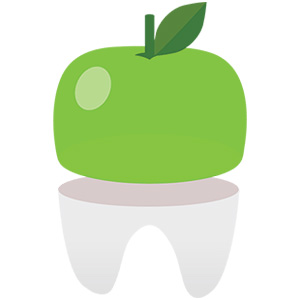Just like the rest of the body, your smile changes with age. Many people notice subtle or even significant shifts in teeth alignment over time.¹ However, enamel wear, gum recession, bone loss, and changes in your bite can also occur, contributing to oral disease and facial aging.
The good news is most of these issues can be avoided or minimized. In this post, we’re sharing 8 things you can do in your 30s and 40s to keep your smile healthy, vibrant, and youthful as you get older.
1. Continue wearing your orthodontic retainer.
“I had braces as a teenager. Why are my teeth shifting?” We hear this a lot at our Park Slope orthodontic practice. The truth is, your teeth never stop shifting. They’re constantly subjected to forces from biting, chewing, speaking, swallowing, and everyday habits, leading to movement over time.²
The best way to combat your teeth’s natural tendency to drift is to wear a retainer a few nights per week for life. If your old retainer feels a little tight, that’s okay. As your teeth shift back to their ideal places, the appliance will loosen up. If you can’t get your retainer over your teeth, however, or it’s extremely painful, don’t force it because it might be time for a new one.
2. Address shifting teeth sooner rather than later.
A retainer does not straighten your teeth. It merely maintains them in their current position. If you had orthodontic treatment in the past, and you’re unhappy with the alignment of your teeth, limited orthodontic treatment may be the best solution. The sooner you deal with an orthodontic relapse, the easier and quicker it can be fixed.
At Fresh Orthodontics, Dr. Ankush Khanna offers limited Spark™ Aligner treatment for adults whose teeth have moved. He designs the exact number of clear aligners needed to achieve specific goals, whether that’s closing a space that re-opened or fixing mild crowding that reoccurred.
Properly aligned teeth and jaws provide adequate support for the lips and cheeks, which can give your facial features a bit of an anti-aging lift. It also makes cleaning your teeth easier, helping you steer clear of oral disease.
3. Try to break bad habits.
Habits can play a significant role in the health and appearance of your smile. Bad habits like biting your nails, chewing on ice, or using your teeth to open packaging can cause enamel erosion, as well as small chips or cracks.³ This can lead to long-term damage and make teeth appear worn and yellow.
Smoking and chewing tobacco are other habits that speed up aging and negatively affect your smile. We know quitting bad habits is easier said than done, especially things like smoking, but your oral health, overall health, and appearance will benefit.
Additionally, if you grind or clench your teeth (bruxism), it can cause wear and tear on your enamel, contributing to tooth movement, premature aging, and even changes in your bite.⁴ Wearing a nightguard if you grind your teeth can help prevent damage and protect your smile.
4. Eat a smile-friendly diet.
What you eat has a direct impact on your oral health. Sugary and starchy foods feed the bacteria in the mouth, causing acid attacks that erode enamel and lead to tooth decay. Acidic foods also wear down enamel, exposing the underlying dentin, which is yellow and one of the reasons people’s teeth can look discolored as they age.⁵
Minimizing sugary food and drinks, simple, refined starches, and acidic foods will safeguard your smile. When you do have something acidic, wait at least 30 minutes after eating or drinking to brush your teeth, as you can inadvertently damage your temporarily weakened enamel.
Nutrient-rich foods, on the other hand, like leafy greens, dairy products, and lean proteins can strengthen teeth and gums. In your 30s and 40s, it’s especially important to embrace a balanced diet high in calcium, vitamin D, and other nutrients to support bone density and prevent issues like gum recession, jawbone deterioration, and tooth loss.⁶
5. Embrace oral hygiene.
A solid oral hygiene routine is key to avoiding smile changes as you age. 30 or 40 years of biting forces, enamel wear, and habits can make you more vulnerable to decay and gum disease.
Commit to brushing your teeth at least twice a day with a soft-bristled toothbrush, and flossing once daily to get rid of plaque buildup and ward off tooth decay and gum disease. In addition to string floss, consider using a water flosser and mouthwash for added protection and cleaning power.
6. Prioritize your gum health.
Your gums play a vital role in supporting your teeth, and as you get older, it’s common to experience gum recession. Gums can recede due to poor oral hygiene, aggressive brushing, or even genetic factors.
When gums recede, they expose more of your teeth, making them appear longer and increasing sensitivity. Focus on gentle brushing techniques and regular flossing.
Aside from gum recession, gum disease is also a concern. As soon as you notice signs of gingivitis (e.g., red, swollen gums, bleeding), visit your dentist for professional care. At this stage, the condition can be reversed.
If not treated, gingivitis advances into periodontitis, or severe gum disease, which causes bone loss and, eventually, tooth loss, both of which accelerate aging and harm your oral health. Not to mention, periodontitis is tied to systemic health conditions, including diabetes, heart disease, Alzheimer’s disease, and more.⁷
7. See your dentist every six months for an exam and cleaning.
Now that you’re firmly in adulthood and enjoying all of the responsibilities that come with it, things like routine dental care can fall to the wayside. But regular exams and cleanings are essential to your oral health.
During these visits, your dentist can identify gum disease, tooth decay, and bite changes early when treatment will be less invasive and more affordable. They can also ensure age-related oral health issues don’t affect your smile in the long term.
As for professional dental cleanings, the hygienist removes tartar that you can’t get rid of with a regular toothbrush and floss. This helps to keep your teeth and gums in tip-top shape.
8. Consider orthodontic treatment for a lifetime smile.
Your bite does change as you get older, so even if you didn’t need orthodontic treatment when you were a teenager, that might not be the case now.¹ If you’ve never straightened your teeth before, just know, it’s never too late.
Adult orthodontics is more popular than ever, and we have plenty of patients in their 30s and 40s. In fact, aligning the teeth and bite now while you’re more likely to have adequate bone density and metabolism might make treatment more efficient and successful than it would be later in life.⁸
Getting braces as an adult doesn’t mean a mouthful of metal either. Dr. Khanna offers discreet, convenient options, including modern clear braces and Spark Clear Aligners in Brooklyn. He’ll digitally design your ideal smile for optimal health, function, and aesthetics.
Explore Adult Orthodontic Treatment Options Today
Whether you’re interested in limited treatment to address shifting teeth or comprehensive orthodontics to correct your bite, Dr. Khanna and his team can help. Book a complimentary consultation at Fresh Orthodontics in Park Slope for personalized treatment recommendations and guidance on how to maintain your best smile at any age.
Sources:
- The Aging Smile: Embracing Changes With Grace, American Association of Orthodontists, 18 Sep 2019. https://aaoinfo.org/whats-trending/4-ways-your-smile-changes-as-you-age/.
- Littlewood et al., Retention and relapse in clinical practice, Australian Dental Journal, Mar 2017. https://pubmed.ncbi.nlm.nih.gov/28297088/
- 6 Habits That Harm Your Teeth (And How to Break Them), Mouthhealthy, American Dental Association. https://www.mouthhealthy.org/bad-habits-for-dental-health
- Shetty et al., Bruxism: A Literature Review, The Journal of Indian Prosthodontic Society, Sep 2010. https://www.ncbi.nlm.nih.gov/pmc/articles/PMC3081266/
- Erosion: What You Eat and Drink Can Impact Teeth, Mouthhealthy, American Dental Association. https://www.mouthhealthy.org/all-topics-a-z/dietary-acids-and-your-teeth
- Krall et al., Calcium and vitamin D supplements reduce tooth loss in the elderly, The American Journal of Medicine, 15 Oct 2001. https://pubmed.ncbi.nlm.nih.gov/11690570/
- Arigbede et al., Periodontitis and systemic diseases: A literature review, The Journal of Indian Society of Periodontology, Dec 2012. https://www.ncbi.nlm.nih.gov/pmc/articles/PMC3590713/
- Verna et al., The rate and type of orthodontic tooth movement is influenced by bone turnover in a rat model, European Journal of Orthodontics, Aug 2000. https://pubmed.ncbi.nlm.nih.gov/11029824/













